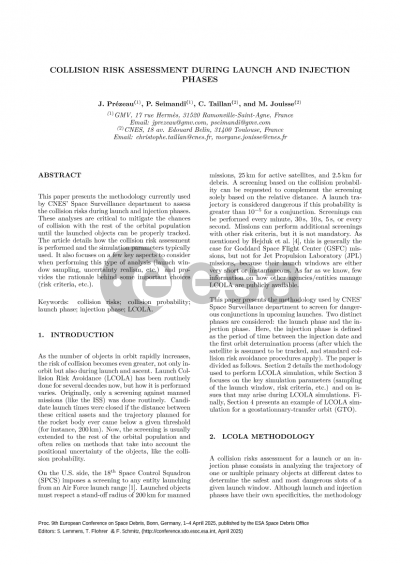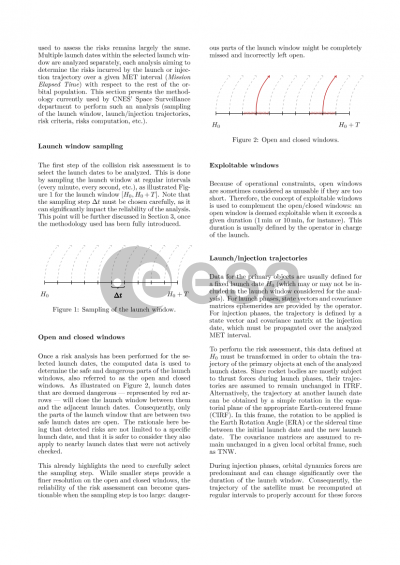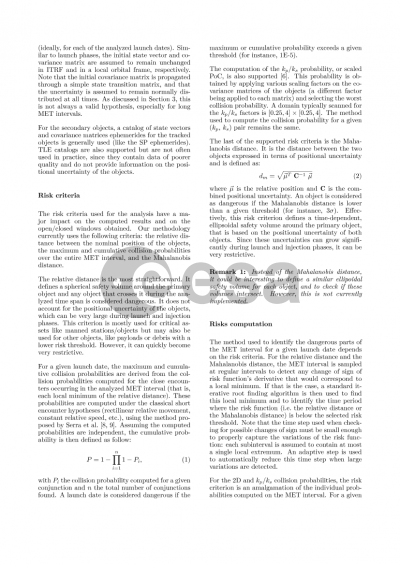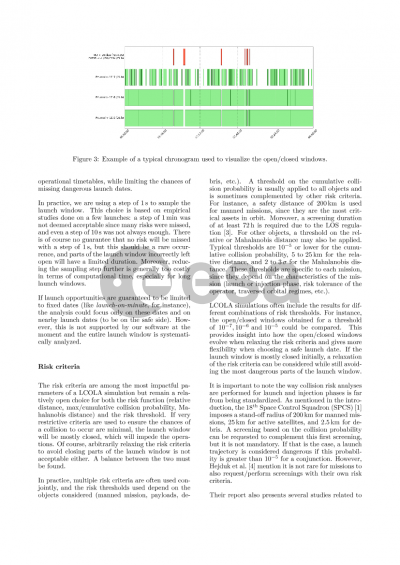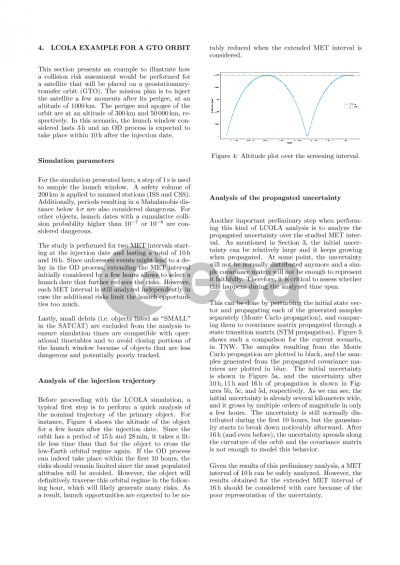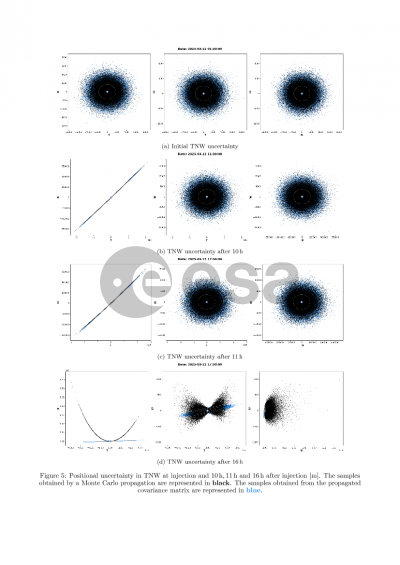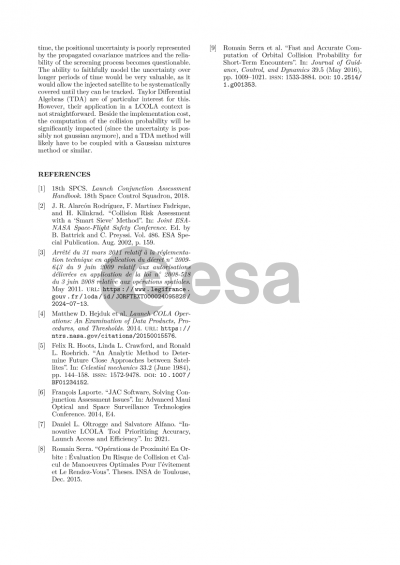Document details
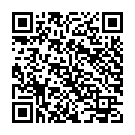
Abstract
The goal of this paper is to present the method proposed by CNES space surveillance department to assess the collision risks during launch and injection phases. These analyses are critical to mitigate the chances of a collision with the rest of the orbital population to occur until the launched object can be properly tracked. To achieve this, the selected launch window is sampled at regular intervals and a collision risk assessment is performed for each of the sampled launch dates. The computed results are then combined to determine which portions of the launch window are safe and make recommendations to the operators.
This paper will first detail how the collision risk assessment is performed: which methods and algorithms are used (pre-filtering of the catalog objects, collision probability computation, uncertainty propagation, etc.), their implementation and the rationale behind the choices made. It will then focus on the challenges specific to launch and injection trajectories. During the launch phase, the rocket body is mostly subject to thrust forces and its trajectory at different launch dates can be obtained by a simple rotation in the adequate Earth-centered frame. Because of the applied forces, the positional uncertainties tend to be very large. During the injection phase, orbital dynamics forces are predominant and can change significantly over the duration of the launch window. Consequently, the trajectory of the satellite must be recomputed at regular intervals to properly account for these forces. The uncertainty on the injection position is usually much smaller than those encountered during the launch phase, but it can grow significantly when propagated. Since the duration of the injection phase depends on the time required for a first orbit determination to take place, how much the uncertainty can grow is mission dependent. Regardless, it is important to keep in mind the uncertainties can become quite large during both phases, which can lead to an inaccurate representation of the position of the objects. This can be a major issue, as it can compromise the validity of the collision risk assessment.
Finally, the risk criteria typically used for the collision risk assessment will also be discussed. The selected criteria are generally a trade-off between safety and launch opportunities: if these criteria are too strict, a large portion of the launch window will be closed, which would impose unnecessary and unrealistic constraints to the operators in charge of the launch. The developed tools support multiple types of risk criteria (miss distance, cumulative collision probability, Mahalanobis distance) that can be combined and selectively applied to different groups of objects, each with their own risk threshold. For instance, the risk criteria for manned stations define a large safety volume based on both the miss distance and the Mahalanobis distance and the risk assessment is performed over a minimum duration of 72h after launch. For other population objects, the main risk criterion is the cumulative collision probability, but safety volumes based on the miss distance and Mahalanobis distance are often added for critical assets like operational satellites. Small debris are generally excluded from the analysis to ensure simulation times are compatible with operational timetables and to avoid closing portions of the launch window because of poorly tracked objects.
Preview
